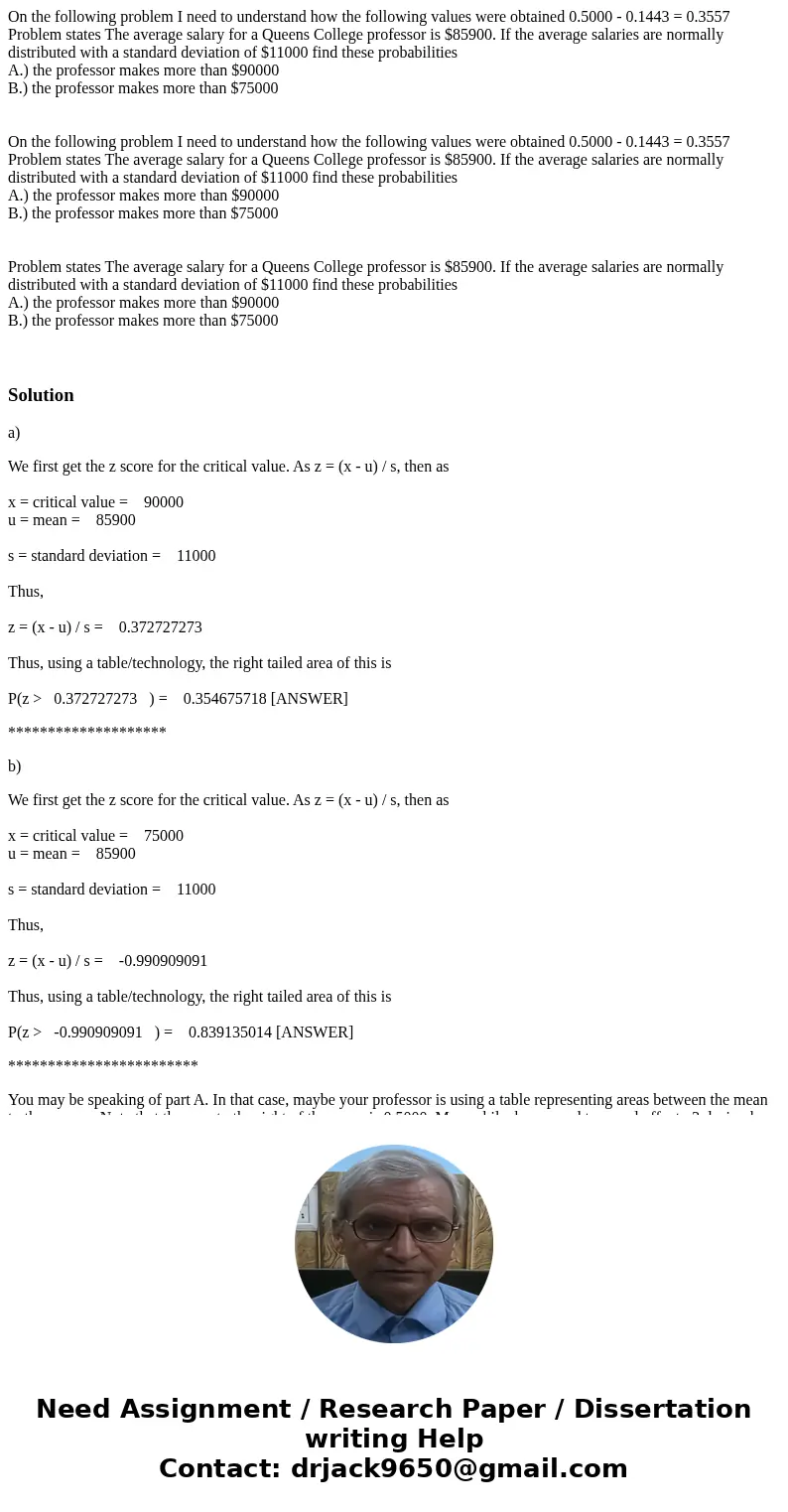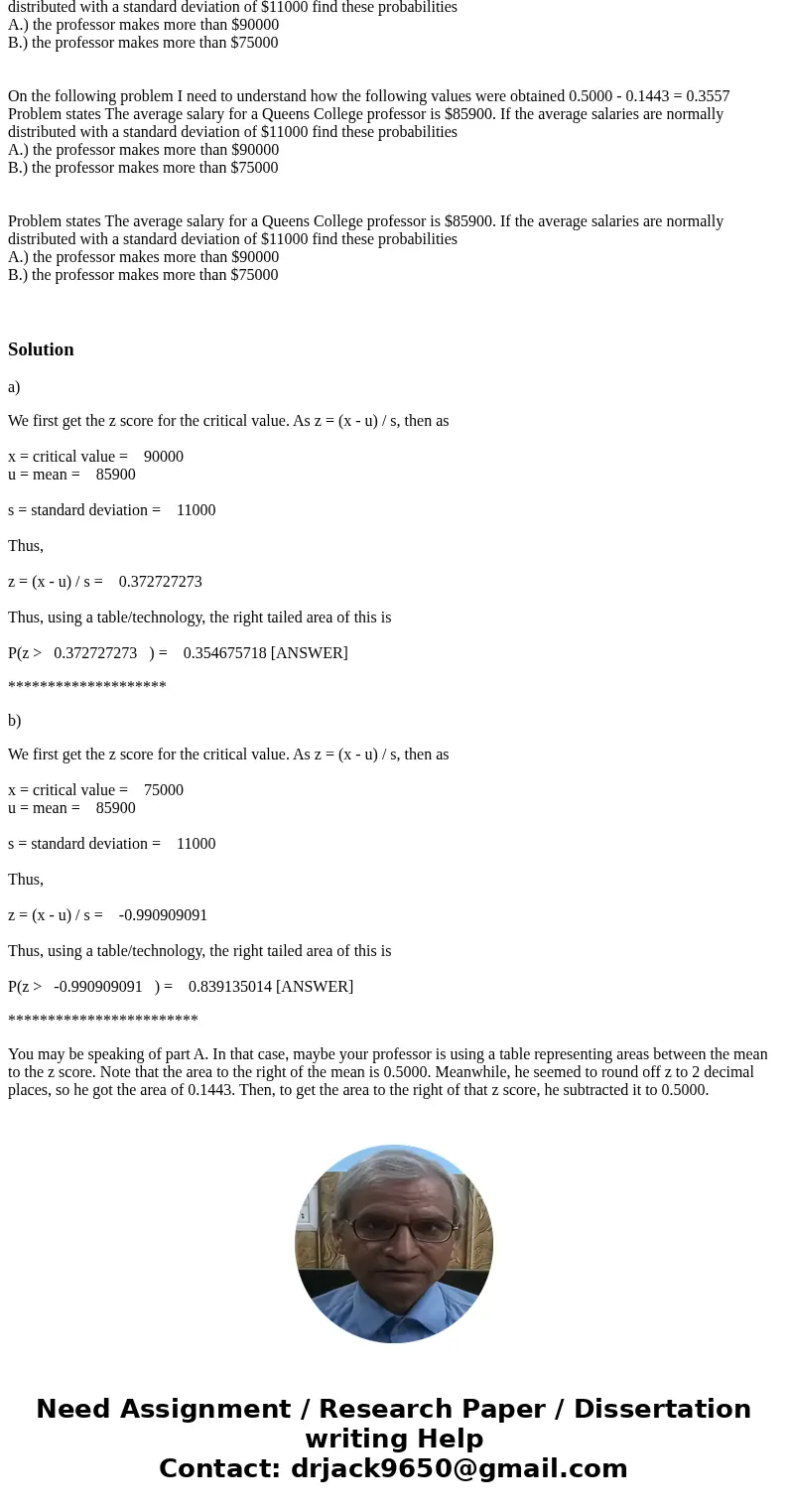On the following problem I need to understand how the follow
Solution
a)
We first get the z score for the critical value. As z = (x - u) / s, then as
x = critical value = 90000
u = mean = 85900
s = standard deviation = 11000
Thus,
z = (x - u) / s = 0.372727273
Thus, using a table/technology, the right tailed area of this is
P(z > 0.372727273 ) = 0.354675718 [ANSWER]
********************
b)
We first get the z score for the critical value. As z = (x - u) / s, then as
x = critical value = 75000
u = mean = 85900
s = standard deviation = 11000
Thus,
z = (x - u) / s = -0.990909091
Thus, using a table/technology, the right tailed area of this is
P(z > -0.990909091 ) = 0.839135014 [ANSWER]
************************
You may be speaking of part A. In that case, maybe your professor is using a table representing areas between the mean to the z score. Note that the area to the right of the mean is 0.5000. Meanwhile, he seemed to round off z to 2 decimal places, so he got the area of 0.1443. Then, to get the area to the right of that z score, he subtracted it to 0.5000.


 Homework Sourse
Homework Sourse